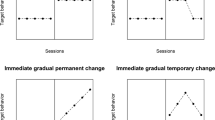Abstract
This paper considers multistage experiments which involve, in each stage, two-level factors whose levels are hard to change. Because of such factors, in each stage, there are restrictions in the randomization of runs leading to two types of experimental units, called whole plots and split plots. As a result, there are two types of random errors, in each stage, that need to be taken into account when modeling the response variable. It is assumed that a linear mixed effects model is appropriate for analyzing observations, and that the method of generalized least squares estimation is used to obtain estimators for the fixed effects in the model. It is also assumed that the model matrix of the fixed effects is based on a general two-level fractional factorial design. The goal of this paper is to provide an analytic form of the covariance matrix of the generalized least squares estimators of the fixed factorial effects in the model, that is useful for evaluating designs. This form shows how any confounding of (fixed) effects with the whole plots, associated with the different stages, affects the variances of their generalized least squares estimators. Some special cases of this form, which correspond to a model matrix based on either a two-level regular factorial or a two-level full factorial design, are also discussed. Results can be extended to multistage experiments with randomization restrictions of the runs, in each stage, with a model matrix based on a general multilevel fractional factorial design.
Similar content being viewed by others
References
Addelman S (1964) Some two-level factorial plans with split-plot confounding. Technometrics 6:253–258
Anderson VL, McLean RA (1974) Restriction errors: another dimension in teaching experimental statistics (Corr: 75V29 p134). Am Stat 28:145–152
Bingham DR, Sitter RR (1999) Minimum aberration two-level fractional factorial split-plot designs. Technometrics 41:62–70
Bingham DR, Sitter RR, Kelly E, Moore L, Olivas JD (2008) Factorial designs with multiple levels of randomization. Stat Sin 18:493–513
Box GEP, Jones SP (1992) Split-plot designs for robust product experimentation. J Appl Stat 19:3–26
Butler NA (2004) Construction of two-level Split-lot fractional factorial designs for multistage processes. Technometrics 46:445–451
Cheng CS, Tsai PW (2009) Optimal two-level regular fractional factorial block and split-plot designs. Biometrika 96:83–93
Christensen R (2002) Plane answers to complex questions. Springer, New York
Goos P (2002) The optimal design of blocked and split-plot experiments. Springer, New York
Goos P, Vanderbroek M (2003) D-optimal split-plot designs with given numbers and sizes of whole plots. Technometrics 45:235–245
Hedayat AS, Sloane NJA, Stufken J (1999) Orthogonal arrays. Springer, New York
Henderson HV, Searle SR (1981) On deriving the inverse of a sum of matrices. Siam Rev 23:53–60
Kowalski Scott M (2002) 24 run split-plot experiments for robust parameter design. J Qual Technol 34:399–410
Kulachi M (2007) Split-plot experiments with unusual number of subplot runs. Qual Eng 19:363–371
Kulachi M, Bisgaard S (2005) The use of Plackett–Burman designs to construct split-plot designs. Technometrics 47:495–501
Mee RW, Bates RL (1998) Split-lot designs: experiments for multistage batch processes. Technometrics 40:124–140
Miller A (1997) Strip-plot configurations of fractional factorials. Technometrics 39:153–161
Milliken GA, Albohali M (1984) On necessary and sufficient conditions for ordinary least squares estimators to be best linear unbiased estimators. Am Stat 38:298–299
Milliken GA, Shi X, Mendicino M, Vasudev PK (1998) Strip-plot design for two-step processes. Qual Reliab Eng Int 14:197–210
Ranjan P, Bingham D, Dean AM (2009) Existence and construction of randomization defining contrasts subspaces for factorial design. Ann Stat 37:3580–3599
Searle SR (1971) Linear models. Wiley, New York
Taguchi G (1987) System of experimental design: engineering methods to optimize quality and minimize cost. Unipub-Kraus International, White Plains New York
Vivacqua CA, Bisgaard S (2009) Post-fractionated strip-block designs. Technometrics 51:47–55
Wu CFJ, Hamada M (2000) Experiments, planning, analysis, and parameter design optimization. Wiley, New York
Acknowledgements
The author would like to thank the editor, and two anonymous reviewers whose valuable comments helped in clarifying notation and key concepts in this paper.
Author information
Authors and Affiliations
Corresponding author
Ethics declarations
Conflict of interest
The author declares that there is no conflict of interest regarding the research work presented in this manuscript.
Additional information
Publisher's Note
Springer Nature remains neutral with regard to jurisdictional claims in published maps and institutional affiliations.
Rights and permissions
About this article
Cite this article
Katsaounis, T.I. On multistage experiments with restrictions in the randomization of treatments. Stat Papers 63, 531–541 (2022). https://doi.org/10.1007/s00362-021-01254-z
Received:
Revised:
Accepted:
Published:
Issue Date:
DOI: https://doi.org/10.1007/s00362-021-01254-z




